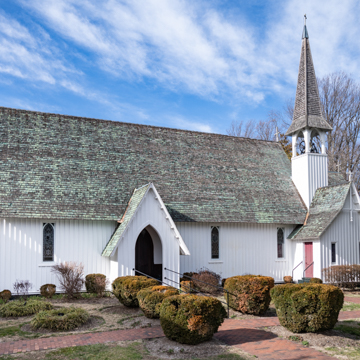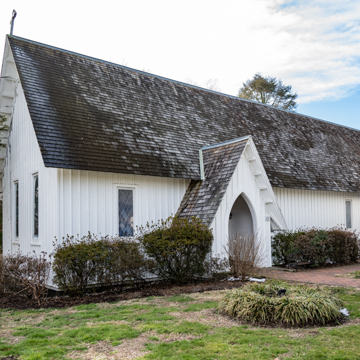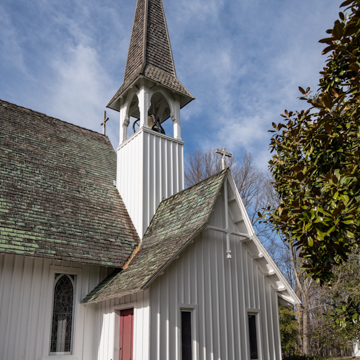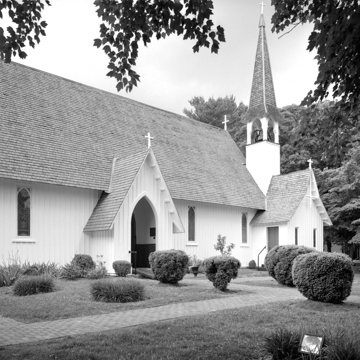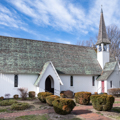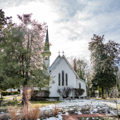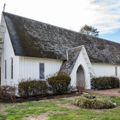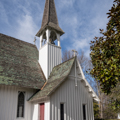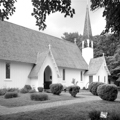Christ Church originated as St. James-the-Less, a chapel of ease for St. James’s Anglican parish. A decade later in 1862, St. James-the-Less had grown enough to become an independent new parish named Christ Church. The parishioners started construction on a replacement church in 1867, selecting a Carpenter Gothic design that closely recalls plans for parish churches published by architect Richard Upjohn in Rural Architecture (1852). The church is charmingly picturesque with board-and-batten siding, stained glass lancet windows, and steep shingled roof and slender bell tower. The long, narrow nave of the church is entered from the side and spanned by a wood scissor truss ceiling. An adjacent Sunday school building built in the 1930s and expanded in the 1950s continues the Carpenter Gothic theme.
You are here
CHRIST CHURCH
If SAH Archipedia has been useful to you, please consider supporting it.
SAH Archipedia tells the story of the United States through its buildings, landscapes, and cities. This freely available resource empowers the public with authoritative knowledge that deepens their understanding and appreciation of the built environment. But the Society of Architectural Historians, which created SAH Archipedia with University of Virginia Press, needs your support to maintain the high-caliber research, writing, photography, cartography, editing, design, and programming that make SAH Archipedia a trusted online resource available to all who value the history of place, heritage tourism, and learning.


